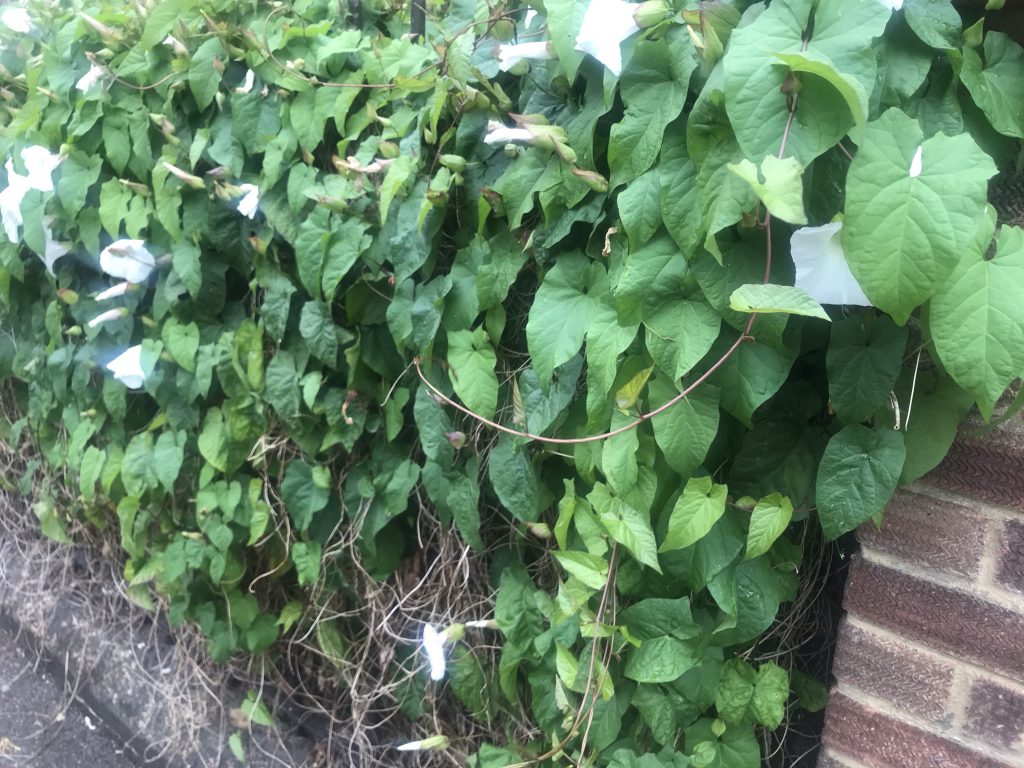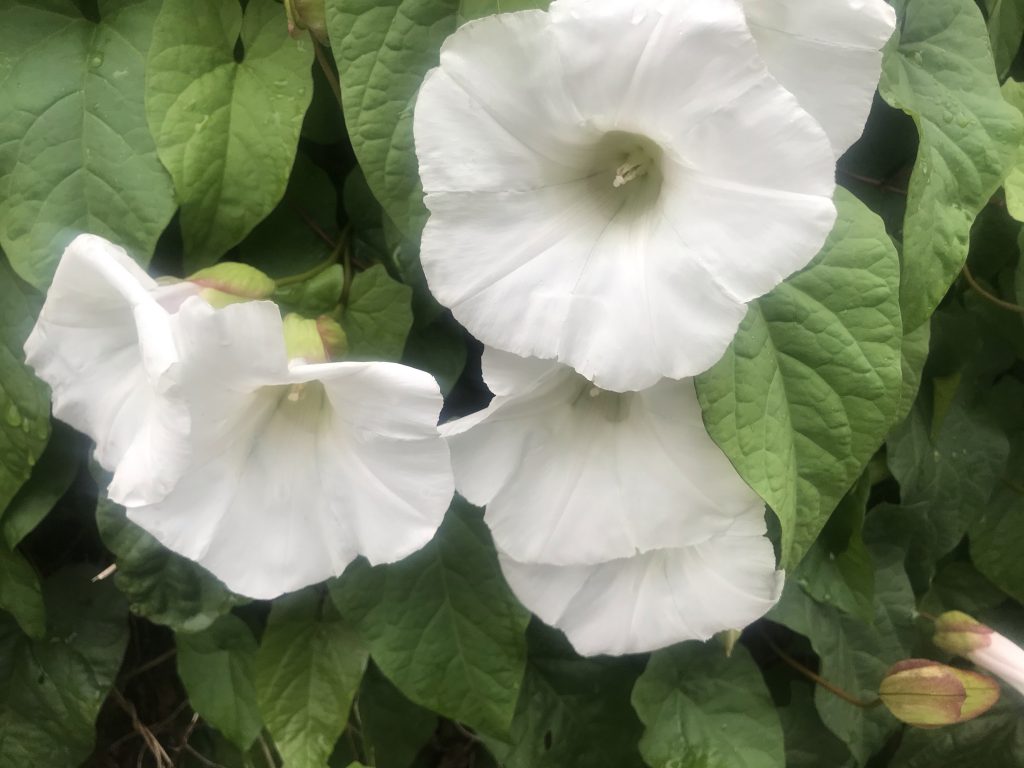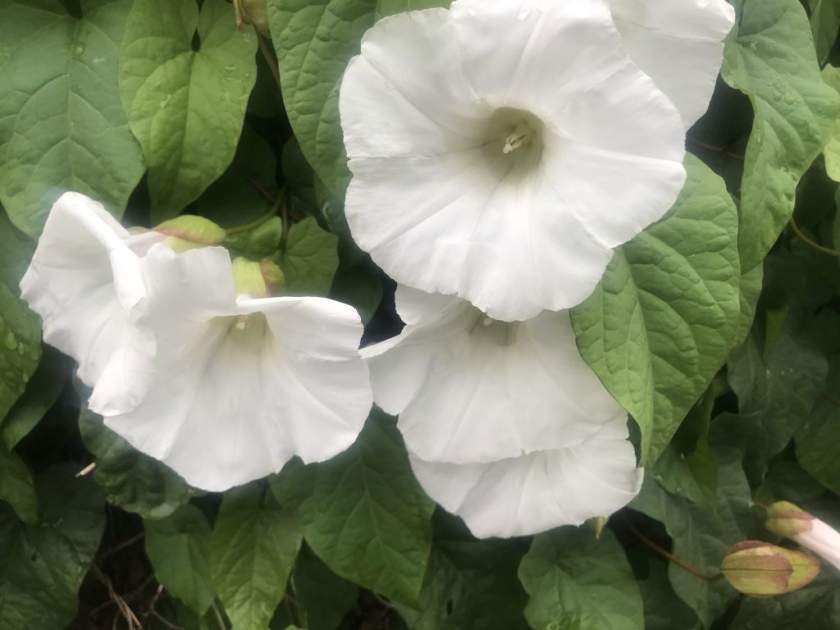Calystegia sepium: The Tenacious Hedge Bindweed
Background and Description: Calystegia sepium, commonly known as Hedge Bindweed, Rutland beauty, bugle vine, heavenly trumpets, bellbind, granny-pop-out-of-bed, or Convolvulus sepium, is an herbaceous perennial plant. It belongs to the Convolvulaceae family and is native to North America. This climber plant exhibits a unique growth habit, twining in a counter-clockwise direction around other plants, reaching a height of 2-4 meters (7-13 feet), and occasionally up to 5 meters (16 feet). The leaves are pale matte green, arranged spirally, simple, pointed at the tip, and shaped like arrowheads, measuring 5-10 centimeters (2-4 inches) in length and 3-7 centimeters (1+1⁄4–2+3⁄4 inches) in width.
Characteristics and Habitat: The flowers of Calystegia sepium are white or pale pink, adorned with five darker stripes. They bloom from late spring to the end of summer. The plant’s twining nature enables it to climb and establish itself on other plants. The trumpet-shaped flowers add an enchanting touch to the landscape. Calystegia sepium features heart-shaped leaves and grows from underground stems or rhizomes. The plant’s seeds have a long lifespan in the soil, contributing to its resilience. While visually appealing, it is considered a weed due to its invasive nature. Eradicating Calystegia sepium can be challenging as its deep-rooted system and rapid spread make it persistent. Consistent digging is the most effective method for removal.
Control Methods for Calystegia sepium:
Hand pulling is a viable control method, although it can be labor-intensive and time-consuming. Additionally, the following methods can be employed for more effective control:
Mulching: Applying a thick layer of mulch, such as bark or wood chips, around plants can hinder Hedge Bindweed from establishing and taking root.
Soil Solarization: To combat the weed, implement soil solarization. This process involves covering the affected area with clear plastic sheeting during the spring or fall and securing it with bricks or rocks. Leave the plastic in place for four to six weeks, exposing the weed to intense sunlight and heat.
Herbicides: Various herbicides are available for controlling Hedge Bindweed. However, it is essential to carefully read and follow the instructions on the label before using any herbicide. Glyphosate, a systemic herbicide, has proven to be highly effective against Calystegia sepium, but multiple applications may be necessary for complete eradication.
Persistent Eradication for a Tangled Intruder: Calystegia sepium, also known as Hedge Bindweed, possesses both beauty and tenacity. With its twining growth habit, charming flowers, and heart-shaped leaves, it can be an appealing addition to any landscape. However, due to its invasive nature and deep-rooted system, persistent eradication methods such as hand pulling, mulching, soil solarization, or targeted herbicide application may be necessary to keep this tenacious plant under control.






